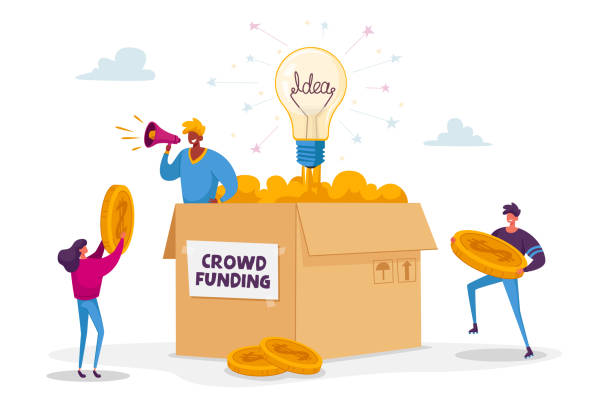Navigating the New Landscape of Modern Giving

Philanthropy has evolved dramatically in the 21st century. Modern giving now reflects changing values and technologies. Navigating this new landscape requires understanding these shifts.
Start by recognizing the rise of digital giving:
- Embrace online platforms: More donors prefer giving through websites and apps. Make sure your organization has a strong online presence.
- Utilize social media: Platforms like Facebook and Instagram are powerful tools for reaching new donors and sharing your mission.
Next, consider the trend towards transparency:
- Showcase impact clearly: Donors want to see how their contributions make a difference. Provide detailed reports and real stories of change.
- Build trust through openness: Share financial information and project updates. Transparency fosters confidence and encourages continued support.
Another significant shift is the rise of personalized giving:
- Segment your audience: Tailor communication and campaigns to different donor groups. Personalized approaches are more effective in engaging supporters.
- Offer varied donation options: Allow donors to choose how their money is used. This flexibility caters to individual preferences and increases engagement.
Furthermore, focus on collaborative philanthropy:
- Partner with other organizations: Collaborations can amplify your impact. Working with like-minded groups can lead to greater success.
- Encourage community involvement: Engage local communities in fundraising efforts. Grassroots support can be incredibly powerful.
In conclusion, navigating the modern philanthropy landscape involves embracing digital tools, ensuring transparency, personalizing engagement, and fostering collaboration. By adapting to these changes, your organization can thrive in today’s evolving giving environment.
Adapting to Changing Donor Expectations and Trends

Philanthropy is evolving, and donor expectations are shifting rapidly. To remain effective, organizations must adapt to these new trends. Understanding and meeting these expectations can enhance engagement and support.
Start by addressing the demand for transparency:
- Provide clear updates: Donors want to see how their contributions are used. Regularly share impact reports and success stories.
- Be open about finances: Detail how funds are allocated. Transparency builds trust and reassures donors about the efficiency of their contributions.
Next, embrace the power of digital engagement:
- Optimize your online presence: Many donors prefer to give online. Ensure your website is user-friendly and secure.
- Leverage social media: Use platforms like Twitter and LinkedIn to connect with potential donors. Share updates, stories, and calls to action.
Consider the trend towards personalized giving:
- Segment your donor base: Tailor your communications based on donor interests and giving history. Personalized messages are more engaging.
- Offer flexible donation options: Allow donors to choose how their money is used. Providing choices can increase satisfaction and commitment.
Also, focus on meaningful interactions:
- Build relationships: Engage with donors beyond just asking for money. Show appreciation and keep them involved with your work.
- Host events and webinars: Provide opportunities for donors to connect with your mission. Interactive events strengthen relationships and deepen commitment.
In conclusion, adapting to changing donor expectations involves being transparent, leveraging digital tools, personalizing interactions, and fostering meaningful relationships. By staying attuned to these trends, your organization can effectively engage and retain supporters in today’s dynamic philanthropic landscape.
Innovative Approaches to 21st Century Philanthropy

Philanthropy has seen significant innovation in the 21st century. New approaches are transforming how we give and make an impact. Embracing these innovations can enhance your organization’s effectiveness and reach.
Start with the rise of crowdfunding:
- Leverage online platforms: Crowdfunding allows for broader participation. Platforms like GoFundMe and Kickstarter enable you to tap into new donor pools.
- Create compelling campaigns: Use engaging stories and visuals to attract support. Well-crafted campaigns can go viral and draw significant attention.
Another innovation is the use of technology for engagement:
- Adopt mobile giving: Mobile apps make it easier for donors to contribute. Text-to-donate services and mobile-friendly websites increase accessibility.
- Utilize data analytics: Analyze donor data to personalize outreach. Tailored communication improves engagement and retention.
Consider the growing trend of impact investing:
- Attract socially conscious investors: Impact investing focuses on generating social and environmental benefits alongside financial returns. Highlight how investments contribute to your mission.
- Develop partnerships: Collaborate with impact investors to fund projects. These partnerships can provide substantial resources and support.
Explore the potential of virtual events:
- Host online fundraisers: Virtual galas and webinars reach a global audience. Online events can be as engaging as in-person gatherings.
- Interactive elements: Use live Q&A sessions and virtual tours to connect with participants. Interactive features enhance engagement and participation.
Lastly, embrace the shift towards sustainable and ethical giving:
- Promote long-term solutions: Focus on projects that offer lasting impact. Donors increasingly value sustainability and ethical practices.
- Communicate your values: Clearly share how your organization upholds these principles. Transparency about your practices builds trust.
In summary, innovative approaches like crowdfunding, technology integration, impact investing, virtual events, and sustainable practices are reshaping 21st-century philanthropy. By adopting these methods, your organization can effectively engage donors and drive meaningful change.
The Shift Toward Impact-Driven Giving

Philanthropy is increasingly focused on impact-driven giving. Donors now seek measurable results from their contributions. This shift requires non-profits to adapt and demonstrate their effectiveness clearly.
First, understand the new donor mindset:
- Prioritize results: Donors want to see the tangible effects of their gifts. Clearly outline how contributions will create change.
- Showcase success stories: Share real-life examples of how your work makes a difference. Impactful stories help donors feel connected to your mission.
Next, focus on transparency:
- Provide detailed reports: Regularly update donors on project progress and outcomes. Transparency builds trust and shows accountability.
- Use data effectively: Collect and share data that highlights the impact of donations. Donors appreciate seeing how their money is used.
Additionally, leverage technology for better reporting:
- Adopt digital tools: Use online dashboards and apps to provide real-time updates. Digital tools make it easier for donors to track progress.
- Create interactive content: Engage donors with visual reports, infographics, and videos. Interactive content can make impact reports more engaging.
Furthermore, embrace collaborative efforts:
- Partner with other organizations: Collaborations can amplify your impact. Working together with other groups can lead to greater success and reach.
- Encourage community involvement: Involve local communities in your projects. Community engagement can enhance the effectiveness of your initiatives.
In conclusion, the shift toward impact-driven giving means demonstrating clear, measurable results. By prioritizing transparency, utilizing technology, and embracing collaboration, non-profits can effectively meet the expectations of today’s donors and drive meaningful change.
Understanding the Forces Shaping Contemporary Philanthropy

Contemporary philanthropy is influenced by various forces that reshape how people give. Understanding these forces helps organizations adapt and thrive. Here’s a look at the key factors driving modern philanthropy.
Technological advancements play a major role:
- Digital platforms: Online giving has surged due to easy access. Websites and apps facilitate donations and spread awareness.
- Social media: Platforms like Twitter and Instagram amplify campaigns. Social media connects causes with a global audience.
Changing donor expectations are also significant:
- Desire for transparency: Donors demand clear information about how their money is used. Transparency builds trust and encourages support.
- Focus on impact: People want to see measurable results. Demonstrating the direct effect of contributions is crucial.
Cultural shifts influence giving patterns:
- Increased social consciousness: More donors are concerned with social and environmental issues. They prefer supporting causes aligned with their values.
- Personalized giving: Donors seek personalized engagement. Tailoring communication and offering choices enhances their experience.
Economic factors also play a role:
- Economic fluctuations: Economic downturns can affect donation levels. Non-profits need to be adaptable and resilient.
- Wealth transfer: The transfer of wealth from older generations to younger ones affects giving trends. Engaging younger donors is increasingly important.
In summary, understanding the forces shaping contemporary philanthropy—technology, changing expectations, cultural shifts, and economic factors—helps organizations navigate the evolving landscape. By adapting to these changes, you can connect with donors and drive impactful change.
Harnessing Technology to Transform Philanthropic Efforts

Technology is revolutionizing how we approach philanthropy. By leveraging modern tools, organizations can enhance their outreach and impact. Here’s how technology is transforming philanthropic efforts.
Online fundraising platforms are game-changers:
- Crowdfunding: Websites like GoFundMe enable organizations to reach a wide audience. Crowdfunding campaigns can quickly gather support for specific projects.
- Donation apps: Mobile apps simplify the giving process. Donors can contribute from anywhere at any time, increasing convenience.
Social media boosts visibility:
- Engage audiences: Platforms like Facebook and Instagram help share stories and updates. Social media drives engagement and spreads awareness of your cause.
- Create campaigns: Use targeted ads to reach potential donors. Tailored messaging can attract supporters interested in your mission.
Data analytics enhances strategy:
- Track donor behavior: Analyze data to understand giving patterns. Insights help tailor campaigns and improve outreach.
- Measure impact: Use analytics to showcase the effectiveness of your programs. Demonstrating results builds credibility and trust.
Virtual events expand reach:
- Host webinars and online events: Virtual events can engage a global audience. They offer an interactive way to connect with supporters.
- Interactive features: Use live Q&A sessions and virtual tours to enhance participation. Interactive elements make events more engaging.
Digital storytelling connects emotionally:
- Use multimedia: Share stories through videos and infographics. Visual content can convey your message more powerfully.
- Highlight personal stories: Personal narratives resonate deeply with audiences. They illustrate the real-world impact of donations.
In conclusion, technology offers powerful tools to transform philanthropy. By utilizing online platforms, social media, data analytics, virtual events, and digital storytelling, organizations can enhance their efforts and engage more effectively with donors.
Redefining Charity: The Rise of Strategic Philanthropy

Charity is evolving from simple giving to strategic philanthropy. This new approach focuses on long-term impact and efficiency. Here’s how strategic philanthropy is redefining the landscape.
Strategic philanthropy emphasizes planning:
- Set clear goals: Define specific outcomes you aim to achieve. Clear objectives guide your efforts and measure success.
- Develop a strategy: Create a plan that aligns with your mission. A well-thought-out strategy ensures resources are used effectively.
Impact evaluation is crucial:
- Measure success: Use metrics to track progress. Regular evaluations help assess whether goals are being met.
- Adjust strategies: Be flexible and adapt based on findings. Continuous improvement ensures your efforts remain effective.
Collaboration enhances effectiveness:
- Partner with others: Team up with organizations that share similar goals. Collaboration can amplify your impact and resources.
- Engage stakeholders: Involve community members and experts. Their insights and support can strengthen your initiatives.
Focus on sustainable solutions:
- Prioritize long-term impact: Choose projects that offer lasting benefits. Sustainable solutions create enduring change.
- Promote self-sufficiency: Support initiatives that build local capacity. Empowering communities to thrive independently ensures continued progress.
Communicate transparently:
- Share results: Regularly update supporters on achievements and challenges. Transparency builds trust and demonstrates accountability.
- Tell compelling stories: Use narratives to illustrate the impact of your work. Engaging stories make your efforts relatable and inspiring.
In summary, strategic philanthropy is redefining charity by focusing on planning, impact evaluation, collaboration, sustainability, and transparency. By adopting these principles, organizations can create meaningful, long-lasting change and foster stronger connections with their supporters.
Embracing Change: Philanthropy’s Future in a Digital World

Philanthropy is rapidly transforming in our digital age. Embracing change is essential to stay relevant and effective. Here’s how the digital world is shaping the future of giving.
Digital tools enhance outreach:
- Utilize social media: Platforms like Facebook and Instagram connect with diverse audiences. Regular updates and engaging content boost visibility.
- Leverage email campaigns: Personalized emails reach supporters directly. Tailored messages can increase engagement and donations.
Online platforms simplify giving:
- Adopt crowdfunding: Sites like Kickstarter and GoFundMe enable easy fundraising. Crowdfunding campaigns can quickly gather support from a wide audience.
- Enable mobile donations: Mobile-friendly websites and apps allow donors to give from anywhere. Simplifying the process increases convenience and participation.
Data drives decision-making:
- Analyze donor behavior: Use data to understand giving patterns. Insights help tailor your approach and improve outreach efforts.
- Track impact: Measure and report the results of your initiatives. Data-driven reports demonstrate effectiveness and build trust.
Virtual events expand reach:
- Host online fundraisers: Webinars and virtual galas can engage a global audience. Interactive features enhance the experience and participation.
- Create engaging content: Use videos and live streams to connect with supporters. Visual content captures attention and drives involvement.
Digital storytelling captivates audiences:
- Share impactful stories: Use multimedia to tell compelling stories. Personal narratives and visuals resonate deeply with your audience.
- Highlight real-life impacts: Show how donations make a difference. Authentic stories illustrate the value of giving.
In conclusion, embracing digital tools and strategies is crucial for modern philanthropy. By leveraging social media, online platforms, data, virtual events, and digital storytelling, organizations can effectively engage supporters and drive meaningful change in the digital age.
